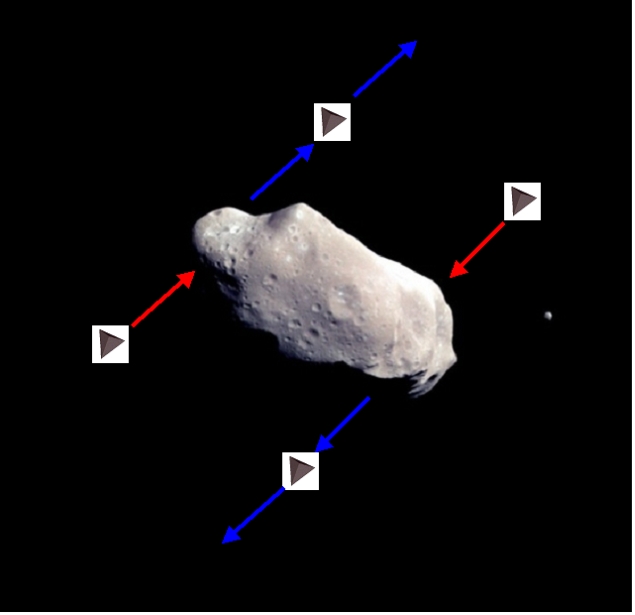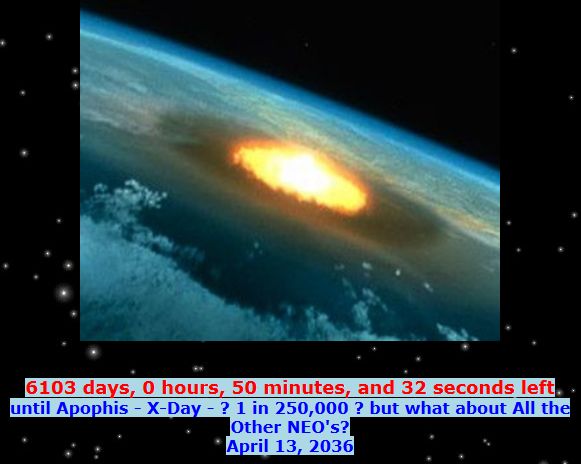 |
A S T R I C
Astro Terrestrial Remote Interaction and Control
Asteroid Reconaissance Intervention and Control
The Core Project within
Earth Renaissance Program of TETRAD Institute
(Astro-Terrestrial (Space-Oriented) Cybernetics and Intelligent Engineering Systems)
constituting the work of
ASTRIC Laboratory
for Space-Based Intelligent Engineering Systems
|
 |
Very Brief Introduction to ASTRIC
*** Please Note: This is not a formal website but is a simple resource for basic information the visitor can read and download. Another website is in the process of design by our professional web development people. ***
The approach within ASTRIC is based upon a different model for how to approach several "Extreme Complex System" (XCS) problems and specifically tasks involved in space-based engineering and mechanical operations. These include asteroid collision deterrence and trajectory redirection, but really ASTRIC is as much about construction, manufactring, mining and even (yes!) agriculture - on Earth as well as in Space.
?????? How can this be so?
First of all, our focus is upon Control - cybernetics, control of systems, robotic and otherwise, and more specifically about the use of inverse methods, randomized algorithms, and stohastic perturbations, as methods for understanding, modeling and controlling systems (natural or synthetic) whose parameters of interest and relevance are inaccessible or (formally or practically) non-computable.
This means: better ways to control simpler, lighter, more autonomous robots working cooperatively in environments where there is high uncertainty, high noise, and little opportunity to have the physical resources or the time to compute new solutions and go-arounds.
Secondly, we are not looking only at the problem of asteroid collision avoidance, and this is for a few very fundamental reasons. Threats to Planet Earth must be addressed and mitigated if not neutralized, yes. However, there are different ways to go about this, and in the process, we have been finding that it makes a great deal of common sense and good solid science to think in terms of engineering and such application areas as construction, mining and manufacturing - from the very first stages, from the initial scoping and defining of the problem and the possible solutions.
In this process, we have discovered that not only can Earth-based procedures including physical simulations and experiments be very useful for designing a better solution for something that may need to be performed and executed hundreds of thousands or millions of miles in space, but also the techniques and tools developed for use in deep space can be very useful for applications on Earth - both on the grond and also undersea.
This is how building and operating systems for deep space or within Earth/Lunar orbital space, to mine asteroids, to remove space debris, to deflect and deter asteroids that could impact the Earth - all connects with such things as AgriBrains, a project that includes having small UAVs fly around in fruit orchards and analyze the quality of fruit on the trees or vines.
Really. Assume that this has already had a lot of thought and hard work by a lot of people.
Our approach to doing this entire set of projects called ASTRIC also differs in other ways. We believe that good, solid, well-defined and strong science and technology does not require massive infrastructures and budgets to make progress, nor does it require limitation or confinement to only those groups and types of people who have gone through the arduous paths of higher education. So we are enlisting and activating student apprentices and interns who are in their undergraduate education, or pre-university levels, in high school, doing intelligent and sensible projectds that "map" to the tasks of ASTRIC. This is not the first time for such educational projects being linked directly to advanced research, nor is it the first time of doing so by memebers of our Team.
The education component is being managed by a young and enterprising non-profit organization, MIRNOVA Academy.
So, we are walking a different path "As Astra Per Astra" but it is a path that is very classical, very well-defined, very logical, and very practical. Rather than putting a lot of documents here on this public website, we are inviting You, if you are interested, to contact us and let's talk about mutual interests, goals, requirements, and how we can collaborate in the classical sense of Synergy, Symbiosis, Synthesis. We all have our individual, team, organization goals and objectives. Let's discuss how we can work Together for the Common Good. Ultimately, Space is our Future, and in more respects than diverting or blocking a few incoming rocks and snowballs.
|



